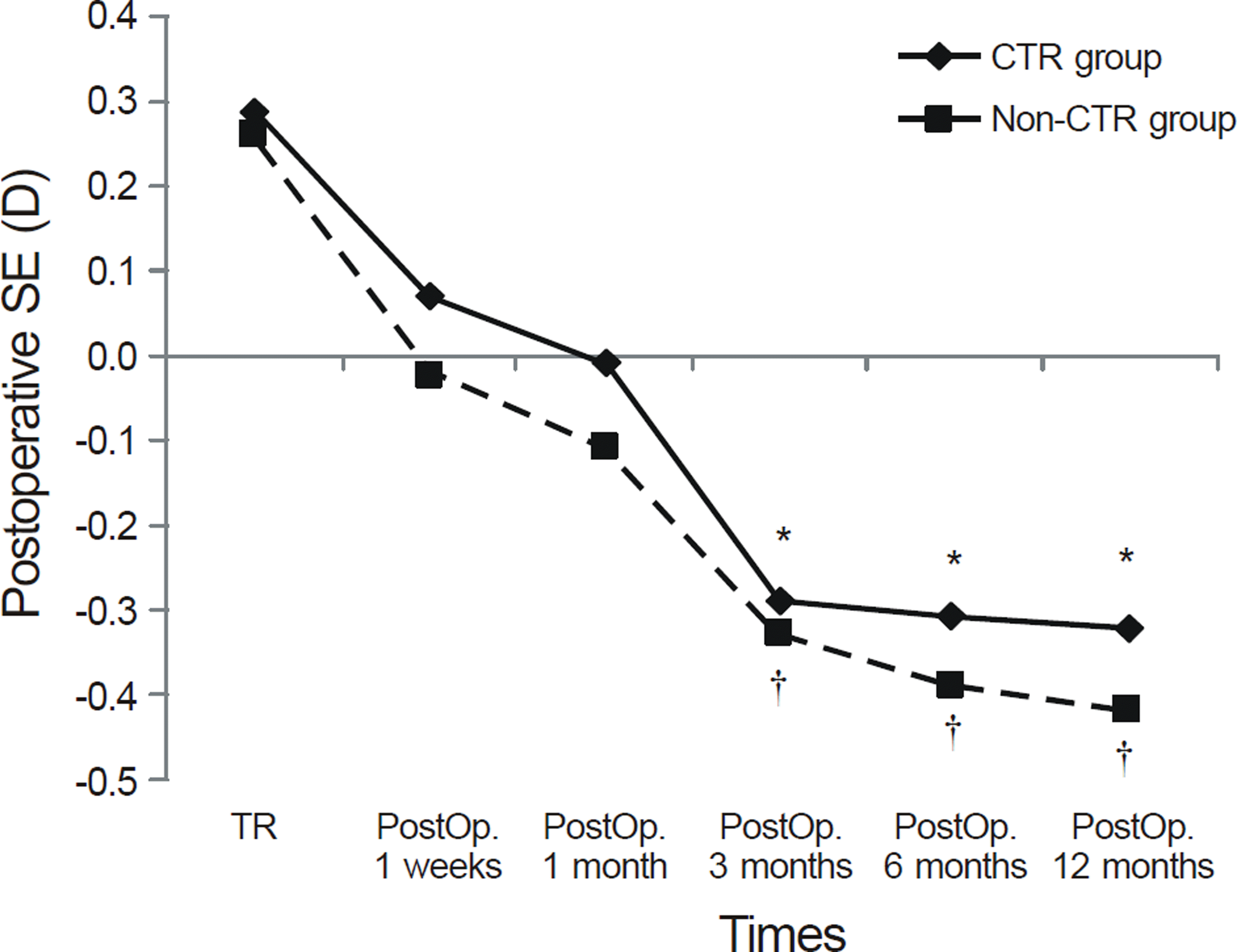1. Erie JC, Hodge DO, Gray DT. The incidence of primary angle-clo-sure glaucoma in Olmsted County, Minnesota. Arch Ophthalmol. 1997; 115:177–81.

2. Ramli N, Chai SM, Tan GS. . Efficacy of medical therapy in the initial management of acute primary angle closure in Asians. Eye (Lond). 2010; 24:1599–602.

3. Seah SK, Foster PJ, Chew PT. . Incidence of acute primary angle-closure glaucoma in Singapore. An island-wide survey. Arch Ophthalmol. 1997; 115:1436–40.
4. Nongpiur ME, He M, Amerasinghe N. . Lens vault thickness, and position in chinese subjects with angle closure. Ophthalmology. 2011; 118:474–9.

5. Kubota T, Toguri I, Onizuka N. . Phacoemulsification and in-traocular lens implantation for angle closure glaucoma after the re-lief of pupillary block. Ophthalmologica. 2003; 217:325–8.

6. Jacobi PC, Dietlein TS. . Primary phacoemulsification and intraocular lens implantation for acute angle-closure glaucoma. Ophthalmology. 2002; 109:1597–603.
7. Zhuo YH, Wang M, Li Y. . Phacoemulsification treatment of subjects with acute primary angle closure and chronic primary angle-closure glaucoma. J Glaucoma. 2009; 18:646–51.

8. Hayashi K, Hayashi H, Nakao F. . Changes in anterior chamber angle width and depth after intraocular lens implantation in eyes with glaucoma. Ophthalmology. 2000; 107:698–703.

9. Kim SA, Kang JH, Park JI, Lee KH. Difference between post-operative refraction and predictive refraction after cataract oper-ation in patients with coexisting cataract and primary angle-closure glaucoma. J Korean Ophthalmol Soc. 2005; 46:1983–8.
10. Kang SY, Hong S, Won JB. . Inaccuracy of intraocular lens power prediction for cataract surgery in angle-closure glaucoma. Yonsei Med J. 2009; 50:206–10.

11. Sun R, Gimbel HV. In vitro evaluation of the efficacy of the capsu-lar tension ring for managing zonular dialysis in cataract surgery. Ophthalmic Surg Lasers. 1998; 29:502–5.

12. Schild AM, Rosentreter A, Hellmich M. . Effect of a capsular tension ring on refractive outcomes in eyes with high myopia. J Cataract Refract Surg. 2010; 36:2087–93.

13. Kim TW, Kwon JW, Lee JH. Long-term follow-up of the insertion of capsular tension ring in cataract surgery. J Korean Ophthalmol Soc. 2005; 46:1624–9.
14. Cha YD, Kim HJ, Lee DH. New model of capsule measuring ring: The possibility to predict the capsular bag diameter. J Korean Ophthalmol Soc. 2006; 47:221–6.
15. Takimoto M, Hayashi K, Hayashi H. Effect of a capsular tension ring on prevention of intraocular lens decentration and tilt and on anterior capsule contraction after cataract surgery. Jpn J Ophthalmol. 2008; 52:363–7.

16. Nongpiur ME, Sakata LM, Friedman DS. . Novel association of smaller anterior chamber width with angle closure in Singaporeans. Ophthalmology. 2010; 117:1967–73.

17. Wu RY, Nongpiur ME, He MG. . Association of narrow angles with anterior chamber area and volume measured with anterior segment optical coherence tomography. Arch Ophthalmol. 2011; 129:569–74.
18. Wang BS, Narayanaswamy A, Amerasinghe N. . Increased iris thickness and association with primary angle closure glaucoma. Br J Ophthalmol. 2011; 95:46–50.

19. Yoon JY, Hong YJ, Kim CY. Cataract surgery in patients with acute primary angle-closure glaucoma. Korean J Ophthalmol. 2003; 17:122–6.

20. Lam DS, Tham CC, Lai JS, Leung DY. Current approaches to the management of acute primary angle closure. Curr Opin Ophthalmol. 2007; 18:146–51.

21. Kim JE, Park SW. The refractive change after cataract surgery in patients with acute primary angle closure. J Korean Ophthalmol Soc. 2009; 50:1669–73.

22. Hara T, Hara T, Yamada Y. ‘Equator ring’ for maintenance of the completely circular contour of the capsular bag equator after cata-ract removal. Ophhtalmic Surg. 1991; 22:358–9.

23. Cionni RJ, Osher RH. Management of profound zonular dialysis or weakness with a new endocapsular ring designed for scleral fixation. J Cataract Refract Surg. 1998; 24:1299–306.

24. Jacob S, Agarwal A, Agarwal A. . Efficacy of a capsular tension ring for phacoemulsification in eyes with zonular dialysis. J Cataract Refract Surg. 2003; 29:315–21.

25. Park YK, Choi NY, Lee DH, Joo CK. The effect of capsular tension ring on posterior capsular opacity in cataract surgery. J Korean Ophthalmol Soc. 2002; 43:819–22.
26. Lee DH, Shin SC, Joo CK. Effect of a capsular tension ring on in-traocular lens decentration and tilting after cataract surgery. J Cataract Refract Surg. 2002; 28:843–6.

27. Boomer JA, Jackson DW. Effect of the Morcher capsular tension ring on refractive outcome. J Cataract Refract Surg. 2006; 32:1180–3.






 PDF
PDF ePub
ePub Citation
Citation Print
Print


 XML Download
XML Download